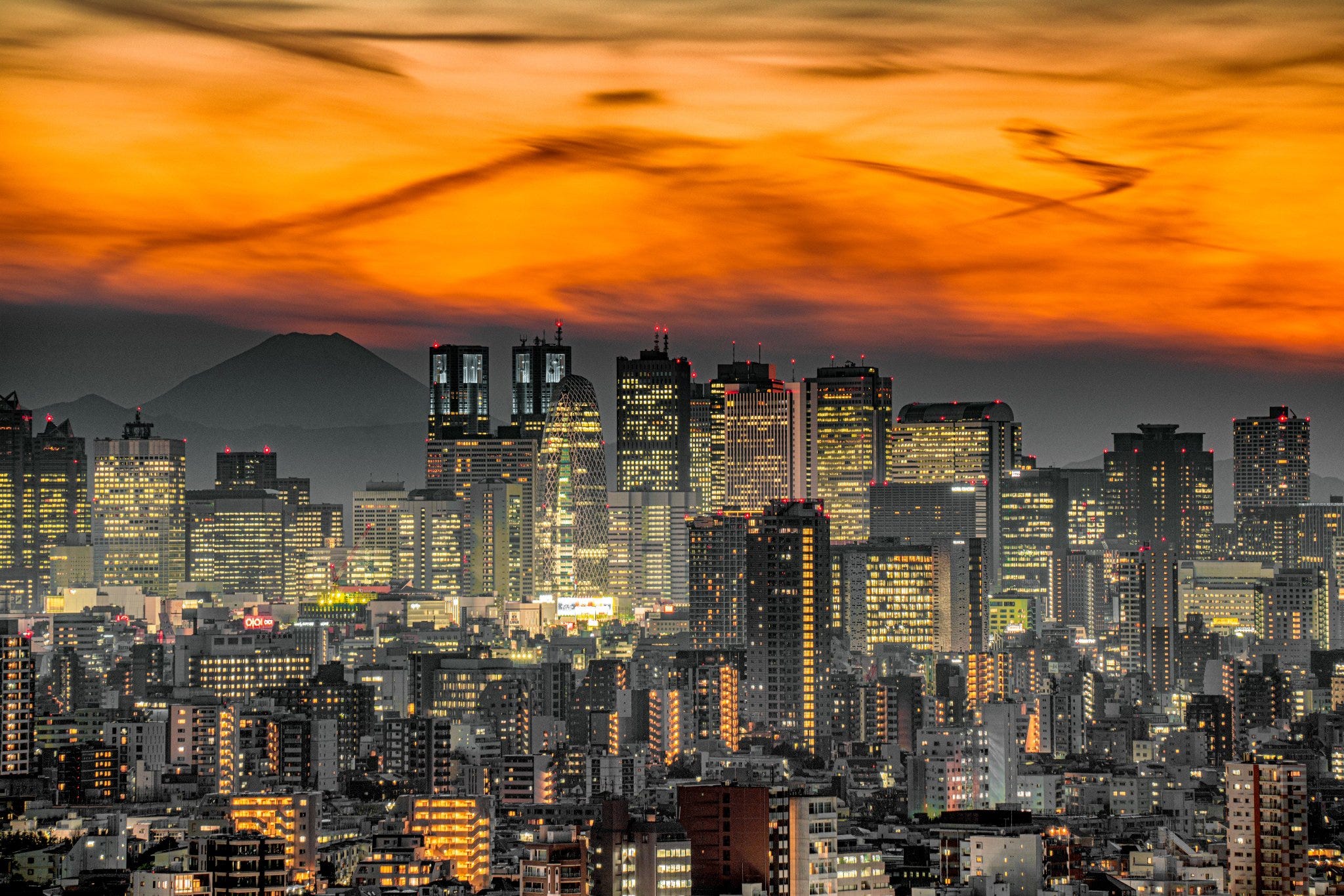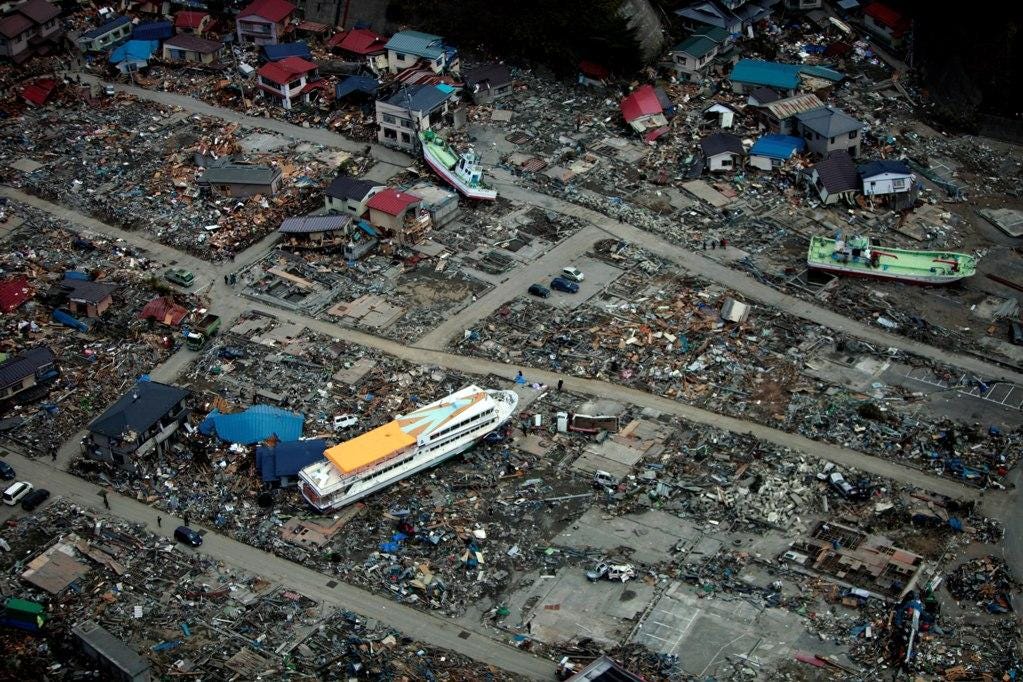A Tokyo Reunion (Revisited)
In the aftermath of Japan's devastating 2011 earthquake and tsunami, family—as it always does—came first.

On March 11, 2011, at precisely 2:46 in the afternoon, just before schools let out, Japan experienced the strongest earthquake in its recorded history—a devastating 9.1 on the Richter scale. Its epicenter, deep below the North Pacific, was 81 miles east of Sendai, the largest city in Japan’s Tōhoku region, and 231 miles northeast of Tokyo, which, with its 37.1 million residents, is by far the world’s largest metropolitan area.
The Great Tōhoku Earthquake, as it later came to be known, triggered a massive tsunami with waves up to 40 meters (132 feet) high. More than 450,000 people were left homeless as a result of the tsunami; more than 122,000 buildings were completely destroyed by the earthquake. Together the two disasters resulted in nearly 20,000 confirmed deaths—2,500 men, women and children are still missing.
In addition to the devasting loss of life and property, the tsunami caused the meltdown of three nuclear reactors at the Fukushima Daiichi Nuclear Power Plant, which released toxic radioactive materials into the air and ocean, forcing thousands to evacuate their homes and businesses. Over 12 years later, some nearby areas remain closed due to contamination and many residents have permanently relocated.
I mention all this not to dwell on the past, but to celebrate the strength and vibrancy of the Japanese people. I’m in Tokyo now visiting family and awestruck by the resiliency of this megacity. Japan’s history of rebirth and rejuvenation after disasters—both natural and manmade—is testament to the human spirit and our ability to persevere even in the face of monumental tragedy. In the last century alone, Tokyo rose from the ashes twice—after the firestorm that gutted the capital city following the 1923 Great Kantō Earthquake, and after the U.S. firebombing near the end of World War II.
TFP readers will know that my wife’s family—and by extension, mine—is from Tokyo, where her father and mother run a sentō (public bath) that their grandson Max hopes one day to run.
My little story below, first published just 11 days after the Great Tōhoku Earthquake struck and eight months before Max was born, is another small reminder of the resilience of humanity and the bonds that tie us together across great oceans of time and distance.
MJ
FROM THE ARCHIVES
The Wall Street Journal, March 22, 2011
A Tokyo Reunion
Fears of a mass exodus spread this weekend, as my wife and I flew from Chicago to Japan. There we found professional baseball, ice-cold beer, grit, and perseverance.
By Michael Judge
TOKYO — American Airlines flight 153 from Chicago to Tokyo was nearly full and pleasantly mundane—young mothers bounced infants in the aisles, businessmen worked in the glow of their laptops, elderly couples stretched their legs near the restrooms. In the wake of the Great Tōhoku earthquake and tsunami, with the number of dead or missing surpassing more than 20,000, the ordinariness of the 13-hour flight was a comfort.
News that an 80-year-old woman from Miyagi Prefecture and her 16-year-old grandson had survived for nine days in the wreckage of their home—which had been moved one kilometer by the force of the tsunami—filled the television, and was on everyone's lips.
Given the fear of aftershocks and the ongoing crisis at the Fukushima Daiichi nuclear plant some 150 miles northeast of Tokyo, my wife Masae and I had joked that we'd be the only ones on the Saturday flight. Shortly before take-off, the Associated Press ran a banner on their mobile site saying that traces of "radioactive iodine" had been detected in Tokyo's drinking water. Spinach and milk were also "tainted." Foreigners were already leaving in droves—a mass exodus from the world's densest metropolis was feared.
Indeed, when we told friends and acquaintances we were planning to return to Tokyo, my wife's home-town and the city where we met 17 years ago this spring, some treated us like characters from Albert Camus's The Plague. Didn't we understand the risks involved? Why subject ourselves to possible contamination if it could be avoided? Many governments were sending planes to evacuate overseas nationals. Washington warned against all "nonessential" travel to Tokyo.
Nonessential—a strange word. Was it nonessential to attend a family wedding we'd been looking forward to for months? When the wedding was eventually cancelled, was it nonessential to be near loved ones at a time when so many had lost theirs? My wife and I had chosen to live in America—we hadn't chosen to abandon our family in Japan.
Friends in and around Tokyo assured us that life here was continuing as close to normal as possible. To save electricity, trains ran less frequently and some businesses closed earlier. There were long but orderly lines at gas stations. After much debate, opening day of Nippon Professional Baseball, the equivalent of Major League Baseball, was delayed—by four days.
Still, on the train into the city on Sunday, we were relieved to see kids playing baseball and soccer in the parks. Laundry hung from clotheslines outside apartment buildings. Restaurants and cafes were busy outside the Nippori train station. Tokyo was full of life and open for business—even as cities as far away as Los Angeles sold out of potassium-iodine pills over fears of trans-Pacific traces of radiation.
Puburiba, the public bath run by my wife's parents, was bustling late Sunday afternoon: Elderly men and women and families of all sizes and ages sought out the communal comfort only a sentō can provide. But before we could settle in, we jumped into my father-in-law's car and drove across town to dine with our nephew Tomo and his fiancée Yurie. They'd decided to postpone their March 26 wedding plans until September, but they remained in high spirits. Over ice-cold beer and the best Korean barbeque I've ever had, Tomo, Yurie and a handful of relatives and friends gave thanks for our being together, no matter the occasion.
On Wednesday we plan to visit the grave of my wife's maternal grandmother, Makino, in the town of Noto on the Japanese Sea. She died last year at the age of 100. She was 13 when the Great Kantō Earthquake of 1923 struck, leveling Tokyo and surrounding cities and killing between 100,000 and 140,000 people.
Two decades later, my wife's paternal grandmother, Kaneyo, and her two youngest children died after fleeing the firebombing of Tokyo during World War II. The bombing commenced on Nov. 17, 1944, and didn't stop until Aug. 15, 1945, the day of Japan's surrender. More than 100,000 Japanese men, women and children, nearly all civilians, died in those nine months.
But my father-in-law’s mother and siblings didn't die in Tokyo: They died in the mountains of Yamagata Prefecture, 220 miles north of the capital. Weakened by the journey, illness and starvation, they couldn't digest the rice they were finally given in Yamagata, and they died of "burst stomachs," according to my father-in-law, Yasumasa. Miraculously, he was the only survivor.
Yesterday, while we were shopping at a crowded Ikebukuro department store, news came that gray smoke was rising from two of the damaged reactors at Fukushima Daiichi, forcing workers to pull back momentarily. Shopping continued apace.
News that an 80-year-old woman from Miyagi Prefecture and her 16-year-old grandson had survived for nine days in the wreckage of their home—which had been moved one kilometer by the force of the tsunami—filled the television, and was on everyone's lips.





